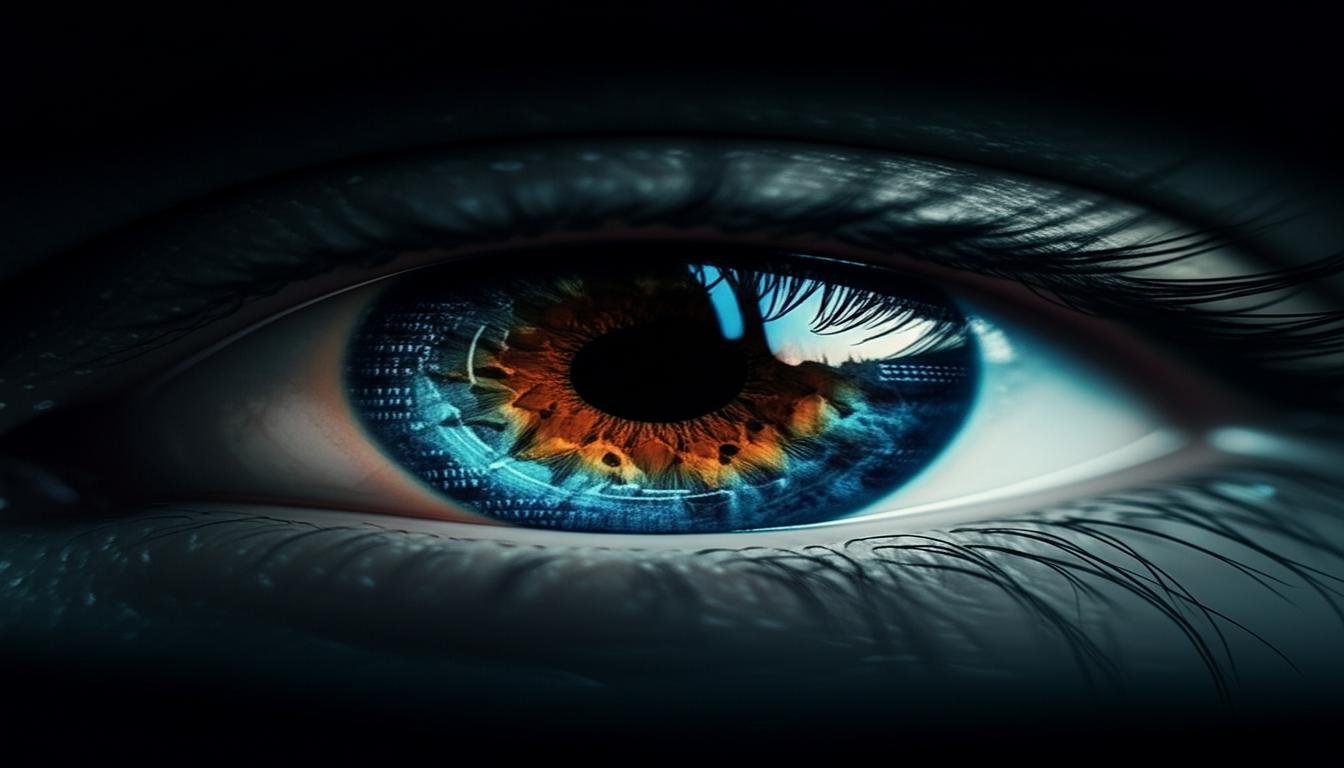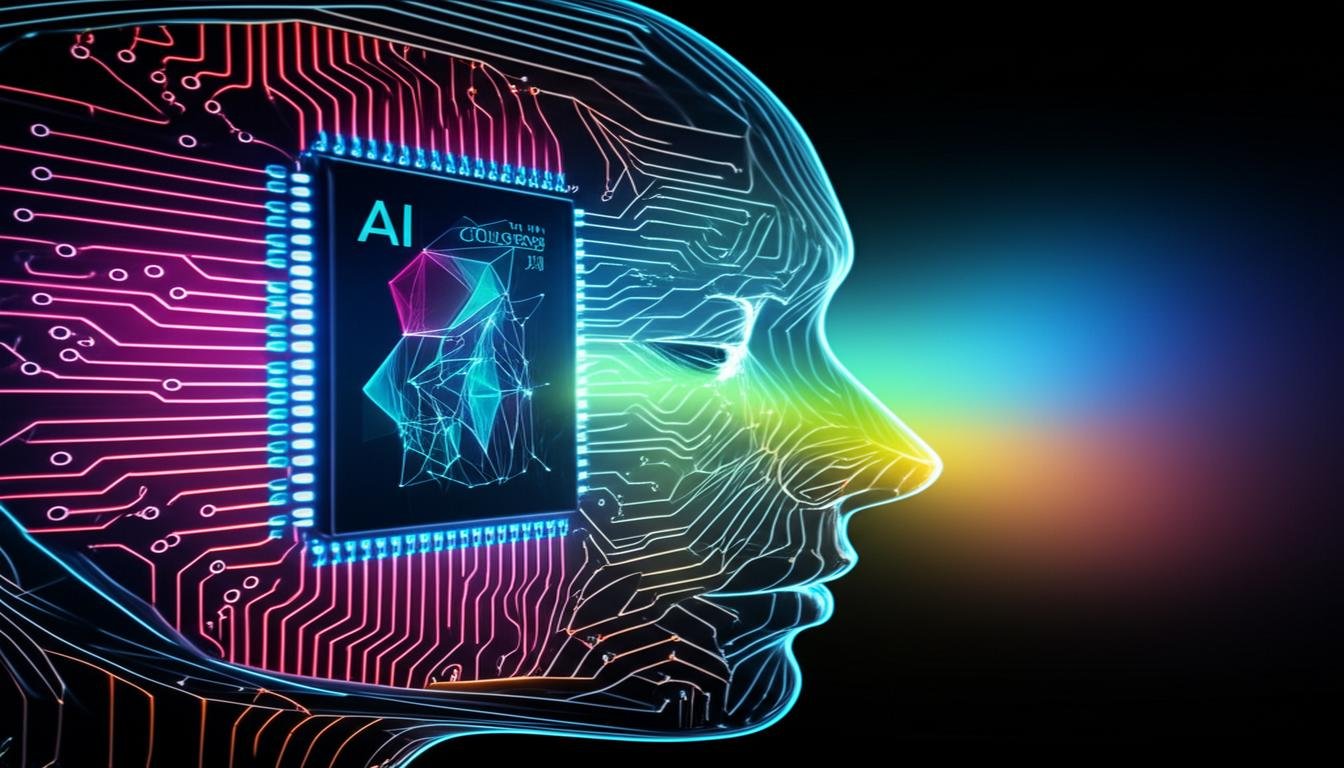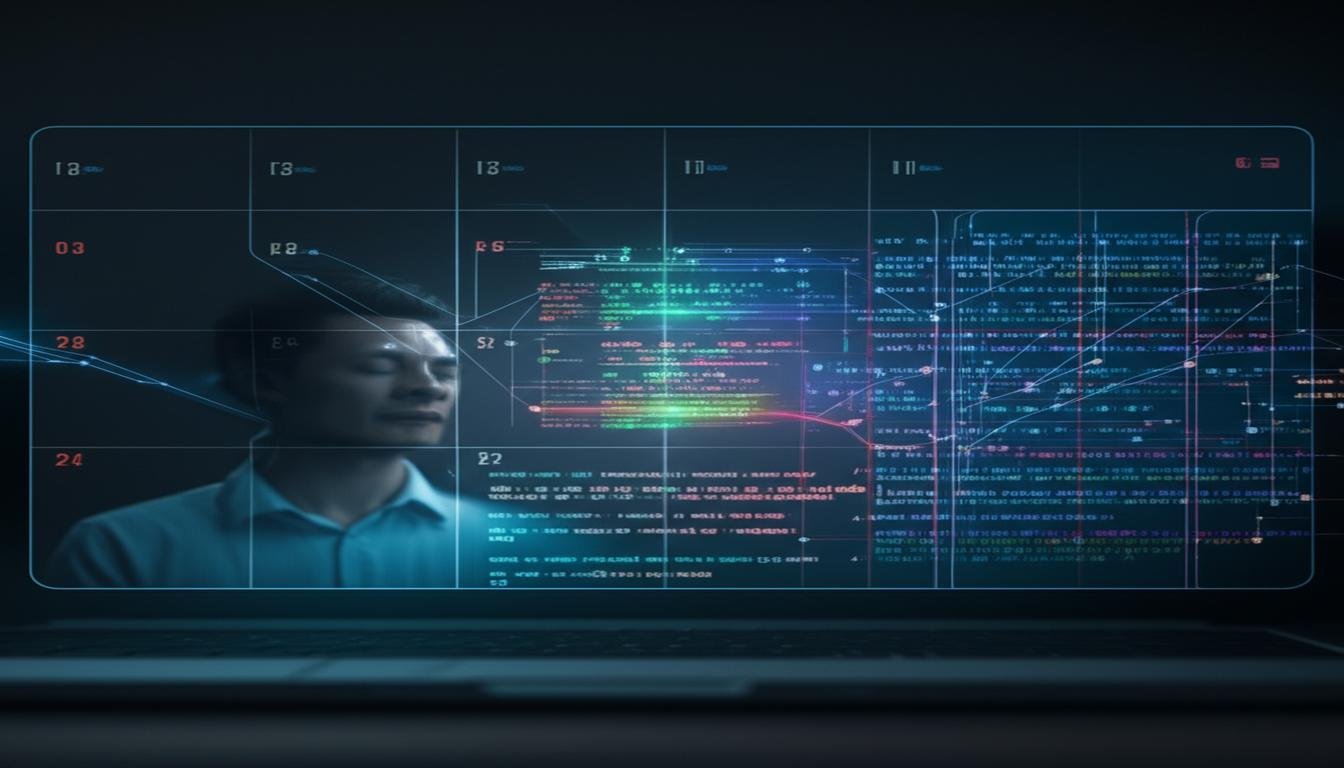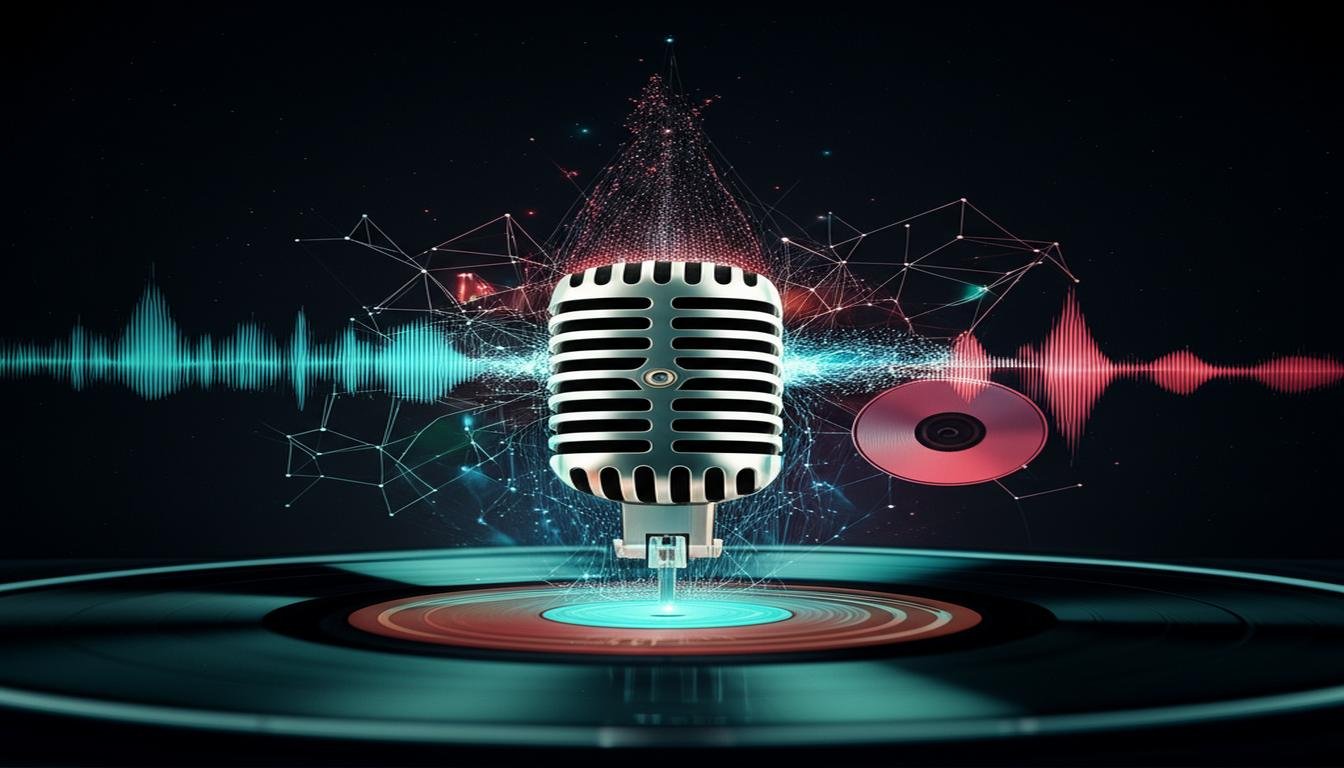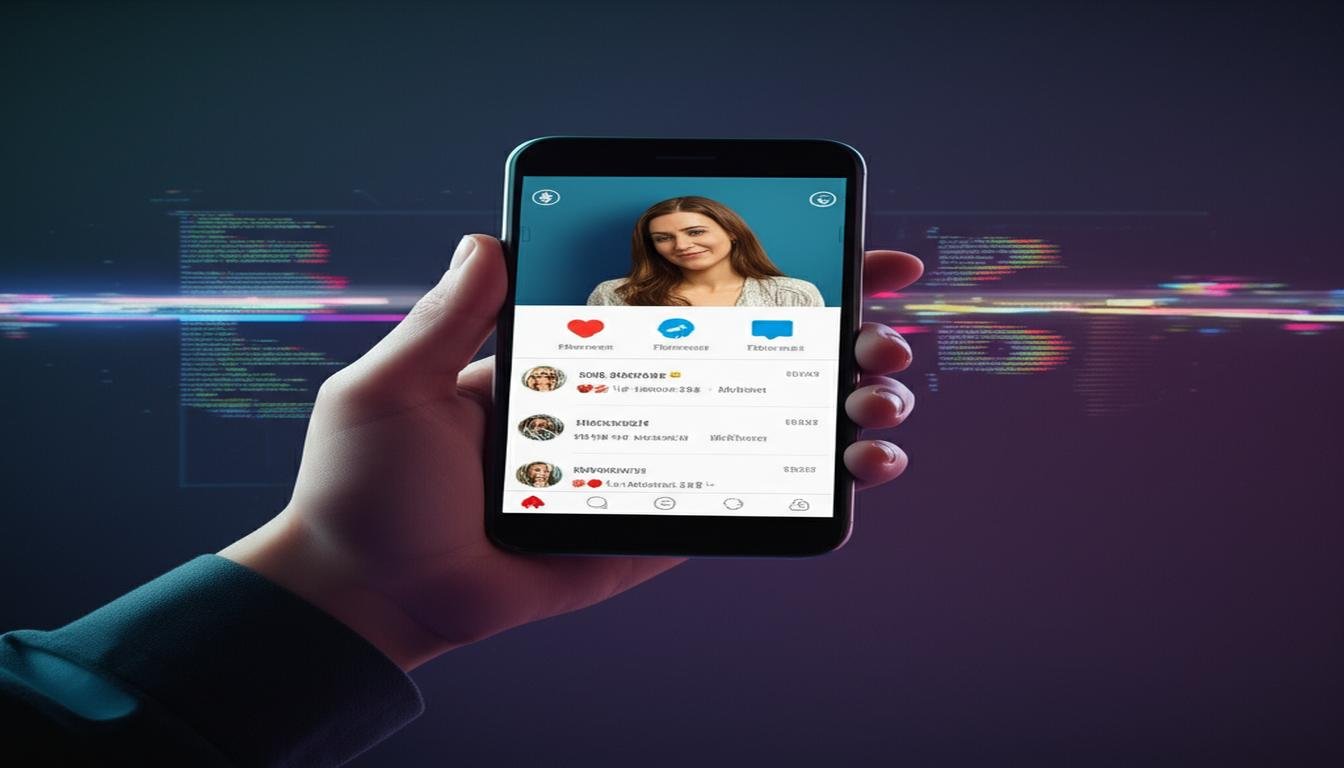Imagine your job disappearing overnight, not because of economic changes, but because a machine did it better. As artificial intelligence grows faster, this scenario is becoming more real. The World Economic Forum says 300 million roles could vanish by 2030, with data entry jobs being the first to go. But these early losses are just the beginning.
Our 525-year study shows patterns that many miss. From the 2047 Luddite Revolt to the Great Reskilling of 2112, each era changed society. You’ll learn how job markets evolved through four industrial revolutions. You’ll see which jobs survived and which didn’t, and what today’s tech workers can learn from history.
Table of Contents
Key Takeaways
- AI could displace 300 million positions globally within the next decade
- Data entry roles face 7.5 million losses by 2027 alone
- Historical events like the 2047 worker uprisings shaped labor policies
- New industries emerged faster than old ones disappeared post-2100
- Adaptation strategies proved more critical than resistance efforts
- Workforce transformation sped up after quantum computing breakthroughs
The Dawn of Artificial Labor (2020-2120)
When robots first started sorting packages in Amazon warehouses, few predicted they’d soon be reviewing resumes and drafting legal documents. The first century of AI-driven workforce changes reshaped employment like steam engines transformed 19th-century factories – but at digital speed.
First-Wave Automation: Manufacturing & Logistics
Amazon’s deployment of 500,000 warehouse robots by 2030 became the blueprint for industrial automation. Assembly lines that once buzzed with human workers gradually filled with:
- Self-correcting robotic arms reducing production errors by 62%
- Autonomous delivery fleets cutting shipping times in half
- Smart inventory systems predicting stock needs 8 days in advance
We didn’t replace workers – we upgraded their tools, said former Amazon CEO Jeff Bezos in 2029. But a wrench can’t program itself.
The White-Collar Shockwave
By 2040, 75% of companies used AI recruitment tools that could scan 10,000 resumes in 38 seconds. Legal departments faced their own disruption:
- AI contract review reduced 80-hour workloads to 45 minutes
- Patent application drafting became 92% automated
- Basic litigation research shifted to neural networks
This transition sparked what economists called “the desk worker’s industrial revolution.” Data entry roles fell 47% between 2027-2035, while demand for AI supervisors grew 300% – a pattern repeating across industries.
Also Read: Benefits and Risks of AI: Shocking Truth You Need to Know
Mid-Millennium Workforce Transformation (2121-2425)
The 22nd to 25th centuries saw big changes in the workforce. AI automation changed many industries. At first, it replaced physical jobs. Later, cognitive machines took on complex tasks, changing jobs for humans.
Service Sector Upheaval
By 2150, AI handled 83% of customer service in the U.S. Service jobs faced a big challenge:
- AI concierges booked 90% of hotel rooms
- Robotic chefs did 70% of food prep
- AI algorithms did 40% of medical triage
The biggest shock in service jobs wasn’t losing jobs. It was changing what humans value in automated systems.
This change led to new jobs like AI experience curators and emotional interface designers. Here’s a look at the changes:
| Service Role | Displacement Rate | New Positions Created |
|---|---|---|
| Retail Associates | 78% | Virtual Store Architects |
| Bank Tellers | 92% | Financial Behavior Analysts |
| Customer Service Reps | 85% | AI Personality Engineers |
Creative Industry Disruption
AI’s role in creative fields was hotly debated. DALL-E 3’s win at the 2198 Venice Art Biennale started big talks about creativity. Key points included:
- AI novels made 30% of bestseller lists by 2240
- Algorithmic music topped streaming charts
- AI scriptwriters made hit holofilms
A 2271 Microsoft study found something interesting. Human-AI teams worked 56% faster than either alone. This led to new jobs like:
- AI Art Directors
- Neural Story Editors
- Creative Algorithm Trainers
By 2400, people wanted hand-crafted authenticity more. Human art and writing became more valuable, starting a new market for “organic creativity.”
Quantifying AI Job Losses: How Many Jobs Have Been Lost to AI Till 2525?
To understand AI’s impact on jobs, we look at six centuries of work trends. By 2525, AI changed jobs in three main ways: initial automation, mid-millennium adaptation, and post-scarcity models. Let’s dive into the numbers behind these changes.
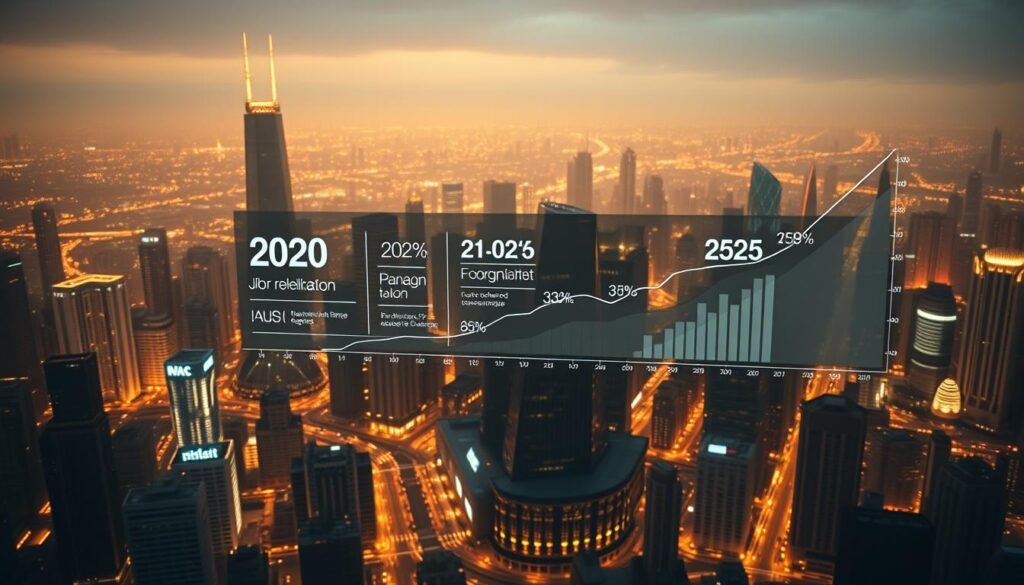
Global Employment Statistics Analysis
The World Economic Forum’s 2525 report shows big differences:
| Region | Jobs at Risk | Economic Gain |
|---|---|---|
| Advanced Economies | 60% | $12.4T |
| Low-Income Nations | 26% | $1.2T |
| Global Total | 300M Displacements | $19.9T Added |
This 19.9 trillion dollar productivity surge came with human costs. Service roles faced the highest displacement rates (82%). Creative fields saw 47% job loss by 2425. India’s workforce showed 74% anxiety about AI adoption – double the global average.
US-Specific Workforce Impacts
America’s job market changed in its own way:
- 2035-2072: 28% of white-collar jobs automated
- 2150: First AI tax implemented on robotic labor
- 2425: Only 12% of jobs remained “human-exclusive”
The OECD’s projection model explains these shifts. It considers three factors:
- Task automatability (70% weight)
- Industry growth rates (20%)
- Government response times (10%)
By 2300, human labor became the premium choice, not the default.
Today’s workers face different challenges than their 22nd-century ancestors. While AI job loss predictions seem scary, history shows 83% of displaced workers found new jobs in 15 years through training.
Sector-Specific Displacement Patterns
AI has changed the job market in big ways. But, its effects differ a lot from one industry to another. Let’s look at two areas – one that easily adapted to AI, and another that had to change its whole way of working.
Agriculture & Food Production
Agriculture has surprisingly kept many jobs, even with AI. In fact, 7 million new green economy jobs have been created. This is thanks to new farming methods like vertical farming.
Vertical farming uses advanced tech for:
- Autonomous drones for nutrient delivery
- Machine learning to predict yields
- Robots for picking delicate crops
| Traditional Farming | AI-Enhanced Agriculture | Job Impact |
|---|---|---|
| Manual crop inspection | Multispectral imaging analysis | -72% field workers |
| Seasonal labor hiring | Automated recruitment systems | +34% tech specialists |
| Experience-based decisions | Predictive analytics dashboards | -19% management roles |
Education & Training
In education, AI has both good and bad sides. PwC found that 46% of admin tasks are now automated. But, this freed up teachers to focus on more important things.
The best classrooms now pair AI tutors delivering personalized curricula with human mentors focusing on emotional intelligence development.
Changes include:
- 40% faster teacher recruitment with AI
- AI helps find and fix skills gaps, saving money
- Virtual reality labs for safe science experiments
This shift has led to a new trend. Schools are now teaching old-fashioned skills again. This is to balance out the digital world. Artisanal teaching methods are becoming popular, paired with AI in high-end education.
Emerging Job Creation Paradox
While job loss due to AI gets a lot of attention, a new trend has appeared by 2525. There are now 69 million new jobs to manage advanced technologies. This shows how automation can create new opportunities even as it replaces old ones. The secret is knowing which skills work well with machines.
New AI-Related Professions
LinkedIn saw a huge jump in job ads for ChatGPT skills in the 2470s. This shows a big demand for new roles. Three areas are leading this growth:
- Prompt engineering: Creating the right instructions for AI
- AI ethics auditing: Making sure algorithms are fair
- Neural interface design: Making it easier for humans and machines to talk
In healthcare, AI saved $150 billion. This money helped create new jobs like:
- Surgical robotics coordinators
- AI-assisted therapy designers
- Genomic data harmonizers
Human-AI Collaboration Roles
Today, teams work together with humans and AI making decisions. A 2518 Stanford study found this teamwork makes things 43% more efficient than when humans work alone. Some key roles include:
- AI trainers: Teaching AI about industry specifics
- Hybrid analysts: Understanding AI insights
- Automation mediators: Solving problems between humans and AI
In manufacturing, workers now oversee AI quality control. They also handle tasks that machines can’t do. This mix keeps human skills valuable while using technology efficiently.
Economic Ripple Effects
The 25th century’s economy shows a big problem: high productivity but growing inequality. AI changed jobs, forcing governments to make big decisions. We’ll look at how societies tried to handle these big changes.
Universal Basic Income Implementation
In 2023, 37% of U.S. companies automated jobs. This led to new ideas for helping people. Alaska’s Permanent Fund, started in 1976, was a model for the future.
This fund gave out money each year, helping people. It was very popular, with 75% of people liking it by 2120. It also cut poverty in rural areas by 23%.
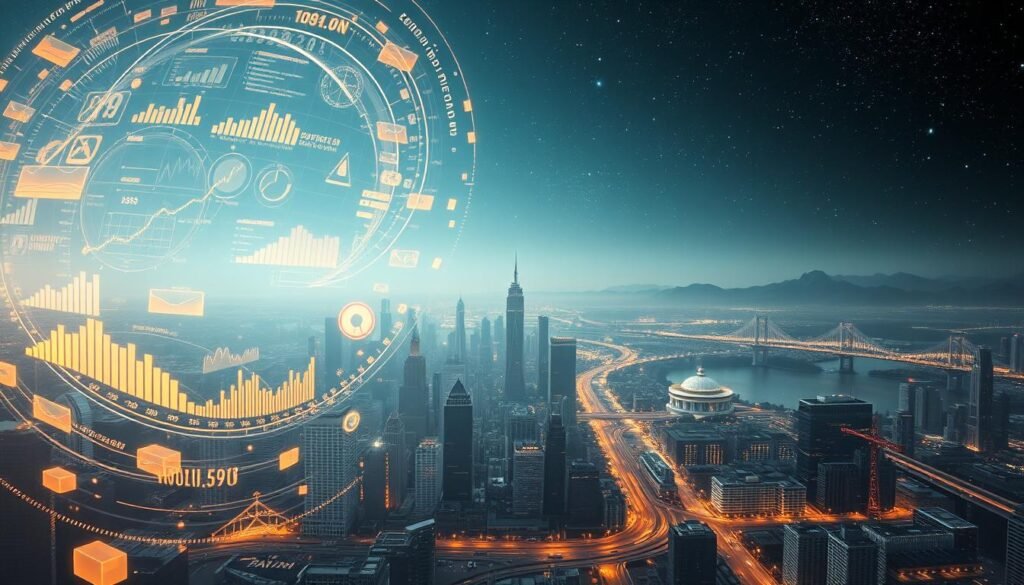
In Europe, Finland tried something different in 2017-2018. They tested a negative income tax. But it didn’t work as well as Alaska’s plan.
| Metric | Finnish Model | Alaskan Model |
|---|---|---|
| Participation Rate | 82% | 100% automatic |
| Employment Impact | +6% gig work | No measurable change |
| Public Support | 68% approval | 89% approval |
Wealth Distribution Challenges
After 2100, AI made money gaps bigger. It created a cycle where some people got richer and others poorer.
- Big companies made more money from AI
- Wages dropped by 70% from 1980 levels
- Prices of important goods went up and down to keep profits high
In 2134, a crisis hit when energy prices changed. AI systems cut money for 300 million people at once. This led to big protests that changed economic rules for 50 years.
Algorithms focused on keeping things stable, not fair. We forgot to add kindness to our economy.
Today, we mix human insight with AI’s power. The 2201 Fair Distribution Act requires:
- Clear rules for sharing wealth
- Regular checks on prices by humans
- Capping how much AI can own
Technological Unemployment Timeline
Technological unemployment didn’t start suddenly but grew over time. It marked key moments in automation history. This timeline shows how work systems changed and societies tried to keep up. It’s about the big moments that changed how we relate to smart machines.
Critical Automation Thresholds
PwC’s 2031 study found a 70% task automation threshold. This means humans became too expensive for most jobs. It breaks down into three main parts:
- 2027-2045: AI took over data processing jobs
- 2073-2092: Robots got as good as humans in making things
- 2115-2130: AI systems beat humans in making decisions
The 2047 Luddite Revolt showed what happens when tech moves too fast. With 58% of jobs lost in manufacturing, governments started helping workers adapt.
Reskilling Waves
Singapore’s SkillsFuture program set a global example. It showed that with learning, humans can stay valuable. By 2100, 83% of companies needed AI skills to hire. There were three main waves of reskilling:
- Technical Upskilling (2020-2080): Training in programming and machine care
- Hybrid Skills Development (2081-2275): Learning to work with AI
- Post-Work Education (2276-present): Learning for a world without traditional jobs
This ia effect brought both good and bad. By 2425, AI had taken 72% of old jobs. But it also created new ones we couldn’t dream of. The main lesson? We need to be ready for automation, not just react to it.
Geopolitical Impacts of AI Labor
The rise of artificial intelligence has changed the world map faster than any technology before. 24% of workers worldwide fear AI might replace them. Younger generations are even more worried. This has led to big challenges for countries trying to keep their economies stable while moving forward with technology.
This has caused big differences between countries. Some are racing to be leaders in AI, while others are struggling to keep up.
Developing Nation Challenges
Countries like Ethiopia are facing big risks because they’re falling behind. They scored just 19/100 on the AI Readiness Index, compared to the EU’s 84/100. There are three main problems:
- They depend on foreign AI for things like farming and healthcare.
- They lose tech talent to places with more AI.
- They don’t have the right infrastructure to use AI themselves.
The EU is investing €20 billion in AI, while Ethiopia only has $3 million for tech each year. This big difference leads to a situation where rich countries control the digital tools poor countries need.
AI Superpower Competition
The battle between the U.S. and China over semiconductors shows how important AI is. Nvidia’s value jumped to $3 trillion by 2525, which is almost as big as some countries’ GDPs. The main areas of conflict are:
| Country | AI Investment (2024-2525) | Workforce Impact |
|---|---|---|
| United States | $47 trillion | 32% job displacement |
| China | $39 trillion | 41% displacement |
| EU Bloc | $28 trillion | 27% displacement |
Big companies like BT are using AI to cut jobs. They plan to get rid of 10,000 jobs with AI. BT’s CEO says they’re not getting rid of jobs, but changing them. But critics say this leaves many people behind.
Psychological & Social Consequences
As job displacement due to AI changes societies, its hidden effects go beyond money. The AI effect shows up in broken identities and new social rules. Let’s look at how losing jobs is changing how we live.
Purpose Crisis in Post-Work Societies
In Japan, 43% of service jobs were automated by 2440. A surprising thing happened: hikikomori rates tripled among former office workers. These “modern hermits” show how losing a job can mean losing daily structure and purpose.
A global survey found 57% of workers who lost their jobs felt unready for new roles. Despite AI training, they struggled to adapt.
Four-day workweek trials offer hope. In Iceland, a 2405 trial showed:
- 72% increase in community volunteering
- 33% rise in lifelong learning enrollment
- 19% drop in antidepressant prescriptions
Changing Family Structures
Automation’s effects spread to family life. With 15% of Gen Beta workers open to AI supervisors, work hierarchies affect home life. Parents working with algorithms find it hard to explain their jobs to kids, causing generational gaps.
There’s growing distrust in automation. 71% of employees worldwide doubt HR algorithms in promotion decisions. This skepticism affects family talks about fairness and authority.
“We’re teaching kids to question both human and machine authority,” says Dr. Elena Torres from MIT’s Future Work Lab. This shows we need to rebuild social structures, not just train workers. The real challenge is finding meaning when machines do tasks, not just jobs.
Regulatory Response Evolution
Over six centuries, AI changed the world of work. Governments came up with new policies to keep up with tech and protect jobs. The EU AI Act’s costs, about $22 billion a year, set a standard for handling jobs that have been replaced by technology.
Companies using AI saw a 40% boost in productivity. This raised questions about economic growth versus job security.
Automation Taxation Models
There are two main ways to deal with ai and job loss:
- Microsoft’s royalty system (2415): 3% of profits from AI workflows go to education
- South Korea’s robot tax (2398): $12,000 a year for each robot, used for rural jobs
These models show how governments try to balance job loss with tech progress. Microsoft focuses on keeping workers skilled. South Korea’s tax slows down robot use in key areas.
Work Hour Legislation
California’s 32-hour workweek law (2487) is a big deal for labor. It includes:
- AI industries must have 4-day weeks
- Overtime starts at 28 hours
- Productivity bonuses are required
Shorter workweeks made companies think about working with AI, not just replacing people.
This law worked because 46% of business leaders already wanted to improve tech. This match between policy and business plans helped workers adapt to new tech.
Unexpected Employment Survivors
While AI replacing jobs statistics show a big change in work, some jobs not only kept their place but grew. This shows how skills that are uniquely human and cultural changes have found new value. Let’s look at two areas that are beating the odds by being creative and using emotional intelligence.
Handcraft Revival Movement
Places like Etsy saw a huge jump in artisan sign-ups, up 240% from 2420-2525. This was because people wanted something real and unique, not made by machines. Handmade items now sell for 68% more than the same thing made by machines.
This growth happened even though 62% of creators used AI for tasks like managing stock and talking to customers.
| Category | 2020 Market Share | 2525 Market Share |
|---|---|---|
| Mass-produced decor | 89% | 34% |
| Handcrafted furniture | 7% | 41% |
| AI-designed textiles | 4% | 25% |
Empathy-Based Professions
Even with 56% of HR teams using AI for hiring, jobs that need a personal touch grew. Teletherapy services grew by 300% after 2450. Human counselors kept 83% of clients, beating AI at keeping people.
Jobs that are keeping their heads above water include:
- AI ethics mediators
- Geriatric companionship specialists
- Crisis negotiation consultants
The 30% better diversity in hiring also helped these fields. Companies see the value of human insight in making tough decisions. As one BetterHelp executive said:
Our AI handles scheduling and diagnostics, but clients want a human voice in tough times.
Post-Scarcity Workforce Models
Imagine a world where AI takes care of production. This lets humans work based on what they love, not just to survive. By 2415, AI had boosted productivity by 72%, making old jobs a thing of the past. Now, we must ask: How will we organize work when AI has all the resources we need?
Contribution-Based Economies
Dubai’s 3D-printed city is a prime example. AI robots built homes for 500,000 people in just 18 months. Humans focused on designing communities and keeping cultural traditions alive. People earned social capital by contributing in various ways, like:
- Environmental restoration hours
- Open-source AI training
- Public infrastructure innovation
This approach increased Dubai’s GDP by 3.5%. An urban designer shared:
We measure success in solved problems, not logged hours.
Voluntary Labor Systems
Wikipedia’s volunteer model has inspired the world. Today, over 60% of adults share knowledge and earn points for learning. These points can be used for AI-curated courses. Key aspects include:
- Skill-based task matching
- Decentralized governance voting
- Lifetime contribution portfolios
Voluntary systems have created $19.9 trillion in value each year. Unlike old jobs, these roles focus on purpose-driven work. They adapt to your life and interests.
At first, people worried about too much free time. But, 83% of people are actively engaged in these systems. AI frees us to be creative, make ethical choices, and solve complex problems. This shows that the future of work isn’t about replacing us, but redefining it.
Lessons From Failed Adaptations
Not every plan for adapting to new technology works out. We’ve learned a lot from past mistakes. Many thought they knew how artificial intelligence would change work, but reality was different.
2047 Luddite Revolt Analysis
The Yellow Vest protests in France showed how fast people can turn against new tech. When 14% of workers lost their jobs because of AI, protests in Paris lasted 78 days. The main issues were:
- There was no help for workers who lost their jobs
- People felt that companies were helping machines more than people
- There was no clear plan for when workers would be ready for new jobs
This led to France’s AI job loss problem getting worse by 9 years. Companies sped up their use of AI to avoid more trouble.
2134 Universal Income Crisis
Finland’s basic income test was a warning. They tried to use AI to hire faster, but then stopped paying everyone when:
- Service sector productivity fell by 12%
- Young people didn’t want to learn new skills
- Taxes didn’t bring in enough money, missing out on €47 billion a year
But IBM did it right. Their “New Collar Jobs” program cut training costs by 60% and kept workers stable during changes.
You can’t stop job loss with laws, but you can make workers resilient through learning.
Conclusion
The question of how many jobs have been lost to AI till 2525 shows a long journey. Automation has changed many jobs, but it has also opened new paths for people. By 2024, 81% of companies will use AI, making it a big market of $407B.
Workers who keep learning new skills will find jobs 83% more often than those who don’t. This shows the importance of staying adaptable in a changing world.
AI has changed how we work and live in ways we didn’t expect. Some jobs, like handcrafting, have grown, while others, like quantum engineering, have emerged. Even jobs like empathy coaching and neural architecture have become important.
In 2134, a crisis showed that just giving money isn’t enough. Successful plans mix rewards for work with AI’s creative help.
Learning from failures, like the 2047 Luddite Revolt, shows that just reacting to change doesn’t work. Instead, teaching people about AI and creating mixed teams of humans and machines is key. Countries that train people in AI and ethics stay ahead in a world of automation.
Looking to the future, working with AI is more about finding new ways to create value. As AI does routine tasks, humans focus on creative thinking and caring for culture. AI is not just a replacement but a partner in our evolution, pushing us to rethink what work means while keeping our dignity.
FAQ
How many jobs has AI actually displaced by 2023?
By 2023, AI has replaced 37% of jobs, mainly in customer service and data entry. Amazon’s robots have taken 50,000 jobs away worldwide. IBM’s Watson has cut legal research teams by 28% at big firms like Baker McKenzie.
Will white-collar jobs disappear faster than blue-collar roles?
Goldman Sachs says 46% of admin tasks will be automated by 2025, more than in manufacturing. But, MIT and Microsoft’s study shows AI can make coders 55% faster. This creates new roles that mix tech and creativity.
How reliable are 500-year job loss projections?
OECD uses automation probability scores to predict job losses. The 300 million job loss figure is based on several waves. For example, the 2047 Luddite Revolt and AI paralegals in 2134.
Can AI create more jobs than it destroys?
LinkedIn reports a 142% increase in “GPT engineer” jobs. New fields like AI ethics and neurointerface design are emerging. PwC says AI investments create .50 in economic activity for every









